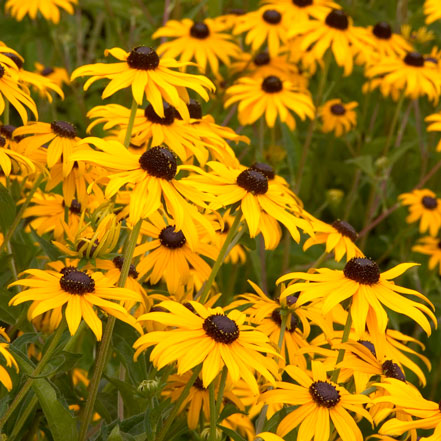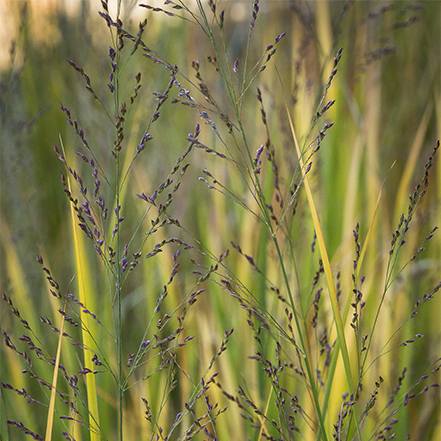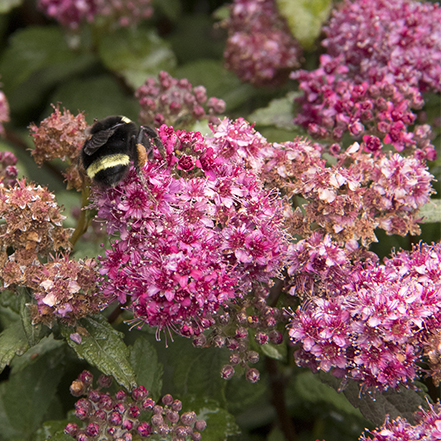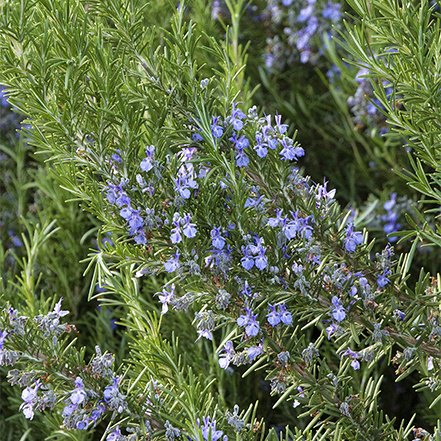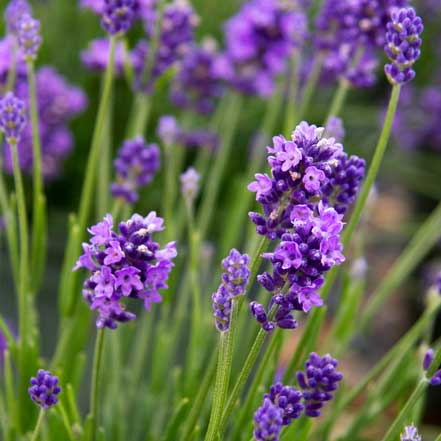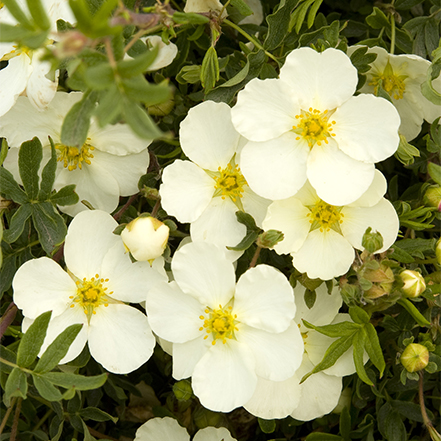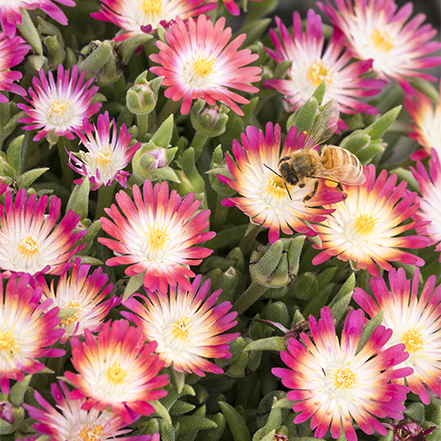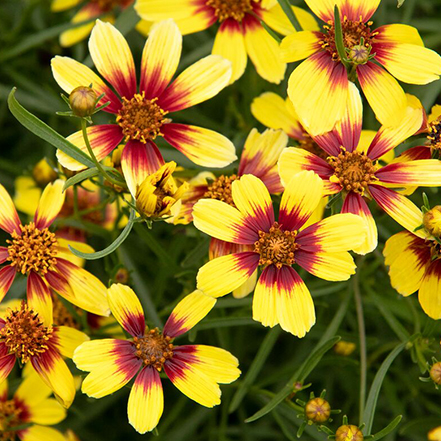Healthy soil is the key to a healthy garden. Poor soil prevents plants from growing to their full potential, robbing you of enjoying the beautiful plants in your landscape, so creating healthy soil in your garden should be a priority. Fortunately, there are several ways to improve the soil in your garden. Find the 6 best ways for improving your garden soil below.
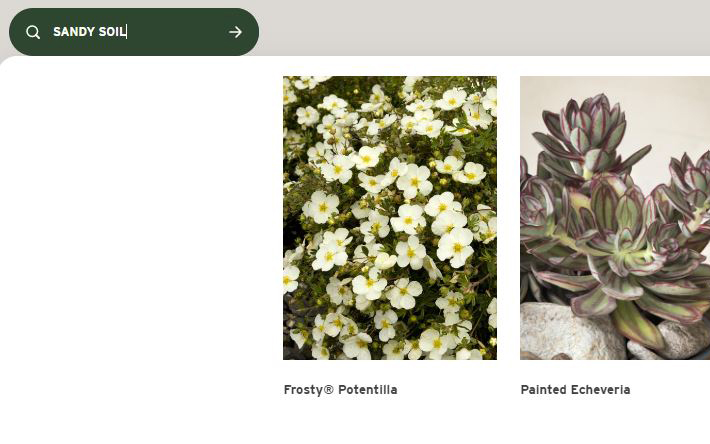
Have really challenging soil conditions? While improving the health of your soil is important, it's even more important to choose plants that will do well in the type of soil you're dealing with. Find our recommendations for the best plants for clay, sandy, and rocky soils below. Or, you can even search plants for your type of soil with the search bar at the top-left of your screen.
What is "Healthy Soil?"
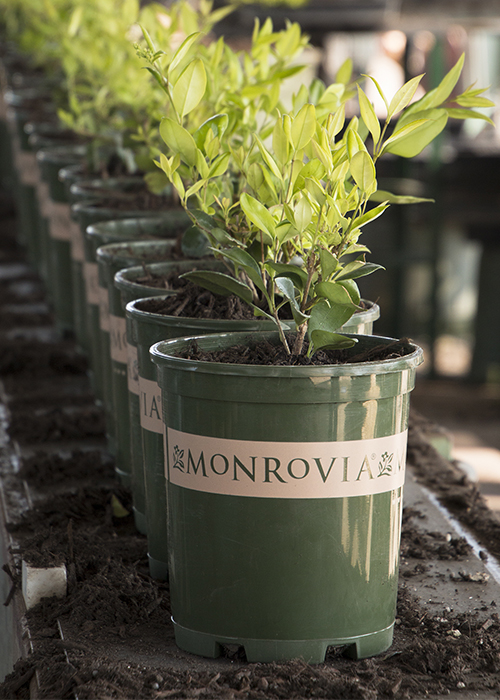
Healthy soil is part of a healthy ecosystem that provides everything a plant needs to grow. This ecosystem includes plants, animals, and microorganisms working together to build robust soil structures. A handful of soil contains billions of microorganisms, including beneficial bacteria, fungi, and insects.
Monrovia promotes healthy soil by adding specialized fungi called Mycorrhiza to the plants. Mycorrhiza creates a symbiotic relationship with plants to deliver nutrients directly to plant roots. Bacteria and fungi break down dead plant debris, making nutrients accessible to plants. Soil plays a significant role in supplying air, water, and nutrients to plants.
Healthy soil is the foundation of a garden, providing benefits to plants and other life in the landscape. A few benefits are reduced pest problems and more beneficial insects. Soil has many functions that affect plant growth, making healthy soil important for your garden.
- Air: Soil contains microenvironments, allowing air through the soil. Access to air is vital for plant roots and microorganisms. Poor soil is often compact, preventing air from being available for life in the ground. Healthy soil contains tunnels that allow air movement and gives plant roots access to oxygen.
- Water: Soil regulates drainage, which significantly impacts a plant's health. Poor drainage causes plants to lose oxygen, while excess drainage prevents the roots from absorbing enough water to sustain the plant. Healthy soil maintains a balance that allows the right amount of water absorption by the plant. Drainage impacts the growth rate of plants and their ability to absorb nutrients.
- Nutrients: All plants require 17 different nutrients to grow. Each nutrient is needed in various amounts to supply plant growth. The types of nutrients required are macronutrients and micronutrients. Plants require macronutrients in large quantities and micronutrients in small amounts. Nutrients come from different sources, including air, fertilizer, and organic matter. Poor soil tends to lose nutrients, while healthy soil retains nutrients.
Is There an Ideal Garden Soil?
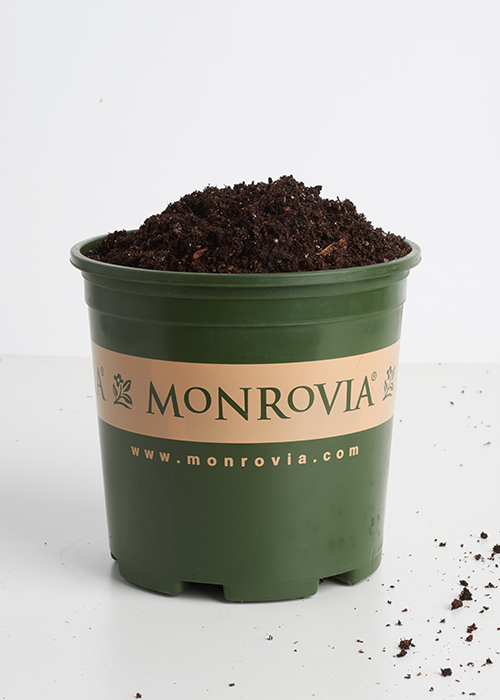
There is an ideal garden soil, but the tricky part is that it can vary from plant to plant. That's why Monrovia has developed over 40 different soil blends. The right soil blend is matched to each plant's needs.
This may sound complicated when we look at it on such a large scale, but it all boils down to what the plant requires. Ideal garden soil will have the right balance of water, air, and nutrients required for the optimal growth of a particular plant.
Soil texture is a vital component of excellent garden soil. Soil texture is measured by the soil's ratio of sand, silt, and clay particles.
These particles vary by size, with sand as the largest particle and clay as the smallest particle. The characteristic of each particle has a significant impact on soil health.
- Sand: There are several pros and cons of sand particles in the soil. Soil comprised of sand drains well, allowing easy access to water. Unfortunately, sand retains little water and nutrients, making it difficult for plants to thrive.
- Silt: Silt particles are smaller than sand and more prominent than clay. An advantage of silt is the ability to retain water and nutrients. However, silt is prone to becoming compact, making it difficult to absorb moisture.
- Clay: Clay has tiny particles, allowing water and nutrient retention. Soils with large amounts of clay often are high in nutrients, a significant benefit for plants. Clay soil poses a few challenges. Working with clay in the garden can be difficult, and clay may retain excess water, leading to compaction and drainage problems.
Determining the texture of your soil is simple. Go into your garden and collect a handful of moist soil 6-8 inches deep in the ground. Squeeze the soil into a ball, then stretch it into a ribbon. If you're able to create a ribbon, the soil has high clay content. Soil that won't form a ribbon has high amounts of sand.
The ideal garden soil usually has a loamy texture, containing similar quantities of each particle. It's important to remember that plants have soil preferences, usually regarding moisture. Some plants thrive in soil that is primarily sand or clay, emphasizing the importance of putting plants in the correct location.
How to Improve Garden Soil
1. Mulch
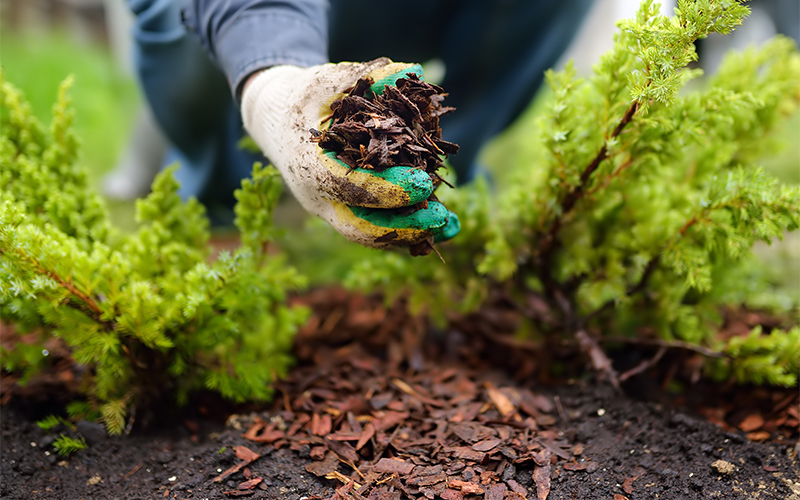
Mulch has numerous benefits for plants and improves your soil. Mulch decomposes over time, adding organic matter to your soil. Several types of mulch can be used in your garden. Wood mulch is very common and long-lasting. Wood takes longer to break down than other mulches but adds organic matter over long periods. Wood mulch adds aesthetic value to your landscape too.
Leaves are a common source of mulch. Examples of leaf mulch include pine needles and ground leaves. Leaf mulches add nitrogen to the soil as they break down, helping your plants stay green. Pine needles benefit from "allelopathy," meaning they contain chemical compounds that suppress weeds. A common myth is pine needles will change the soil pH, but this isn’t true.
Mulch is an excellent source of organic matter, but you shouldn’t add excessive mulch, especially near the trunks of woody plants. Adding a mulch layer of 3-4 inches at planting time is adequate. Add a thin topdressing each year if needed. Mulch shouldn't be applied near the crown of perennials, as the organic matter produced may smother the plant and encourage rotting.
2. Compost
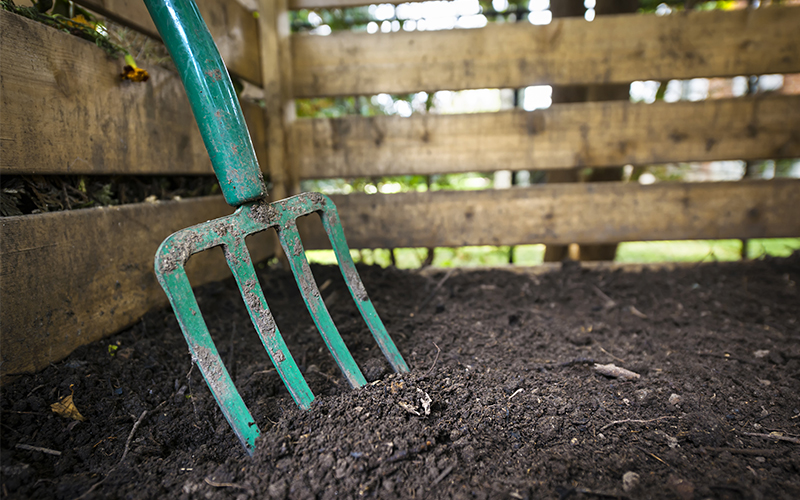
Compost is often called “gardeners' gold” for a good reason. You can create compost from recycled yard waste that's allowed to decompose, resulting in organic matter that is rich in nutrients. Compost is full of micro and macronutrients that are slowly released to continuously feed your plants, making it the ideal fertilizer for your garden. You can use compost by working it in the soil or as a mulch topdressing.
Composting is led by microorganisms breaking down the plant material to add nutrients. Using compost increases the number of microorganisms in your soil. Compost binds to soil particles and improves the soil structure, allowing water, air, and nutrient movement. You can add compost to improve soils with different textures, making the ground easier to work.
Compost is made from three ingredients known as browns, greens, and water. Browns are a carbon source, while greens provide nitrogen. Sources of carbon include materials like dead leaves and twigs. You can source greens from various materials, including vegetable/fruit waste, coffee grounds, and untreated grass clippings. You should add water to provide moisture, helping microorganisms break down the material. The materials are arranged in layers to hasten the decomposition process.
3. Composted Manure
Animal manure is an excellent source of organic matter for the garden. The benefits of manure are similar to compost, making it ideal for improving soil long term. Manure is normally sourced from herbivores, like cows, sheep, and chickens. Nutrient levels in manure are based on the type of animal and storage method. A soil test will help you determine the levels of nutrients needed to improve your soil.
Composted manure is ideal for gardens, as you minimize burn risk for the plants and eliminate odors. The nutrient levels of composted manure are lower, but it's a great source of organic matter to improve soil structure. Nutrients from manure may be limited, but it will increase your soil’s ability to hold nutrients from other sources of organic matter, like compost. Working manure into the ground is the best way to incorporate it into the garden.
4. Test Your Soil
If your plants lack vigor or the leaves look pale, consider testing the soil. Plant problems can have a variety of causes, and a soil test is a great way to determine the health of your soil. A soil test tells you the specific levels of each nutrient in your soil and soil PH levels.
Testing your soil is an effective way to learn about the growing conditions in your yard, as the results may reflect the health of your soil. Poor soils often lack several nutrients, while healthy soil may have adequate or excess nutrients. If you're growing PH-sensitive plants, like Rhododendron, you should test the soil before planting to determine the PH. Soil tests often measure the percentage of organic matter in the soil, which should be 4-6% in ornamental beds.
Testing your soil is easy, as resources are available to instruct you on the testing procedure. The best time of year to test your soil is early spring before the growing season. Use the test results to determine what nutrients need to be added to the garden.
Understanding the health of your soil will help you choose the required actions to improve your soil in the future.
5. Add Required Nutrients
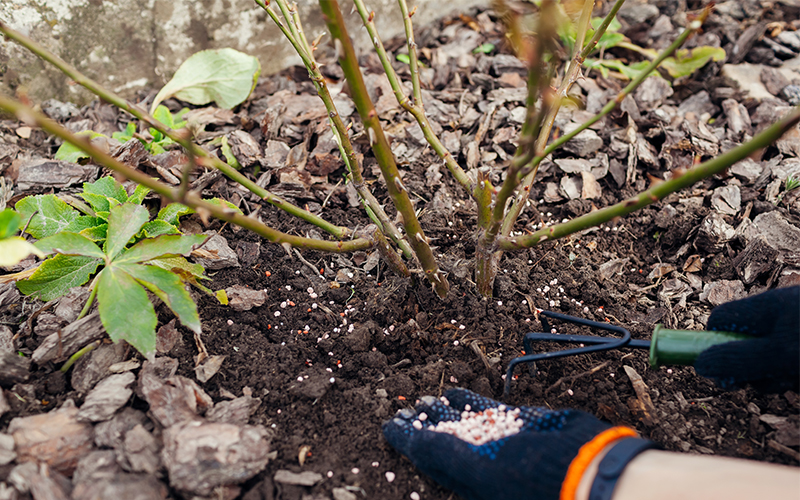
Soil tests help you determine the level of nutrients in your soil, giving you options to add specific nutrients or amendments. The test results will often give you recommendations for adding nutrients. If you don’t have access to a soil test, plants will often show symptoms of nutrient problems.
Take Rhododendrons as an example; they require acidic soil to thrive. Planting them in alkaline soil will cause them to look anemic because they can’t access the proper nutrients. You can amend your soil to become more acidic or alkaline, but the process may take a while, depending on the texture of your soil.
Synthetic vs Organic Fertilizers
Fertilizing adds nutrients to plants and soil, but it's essential to understand the role of fertilizer.
Many synthetic fertilizers are quick-release, meaning the plants have quick access to the nutrients. The nutrients in quick-release fertilizer are used up quickly and only help plants for a limited time. Synthetic fertilizers will typically feed the plants but not improve the soil.
Organic and natural fertilizers release nutrients slowly, allowing the plants to access nutrients over a longer time frame. The effects of organic fertilizers may go unnoticed in the short term, but they often feed both soil and plants.
6. Maintain Healthy Soil
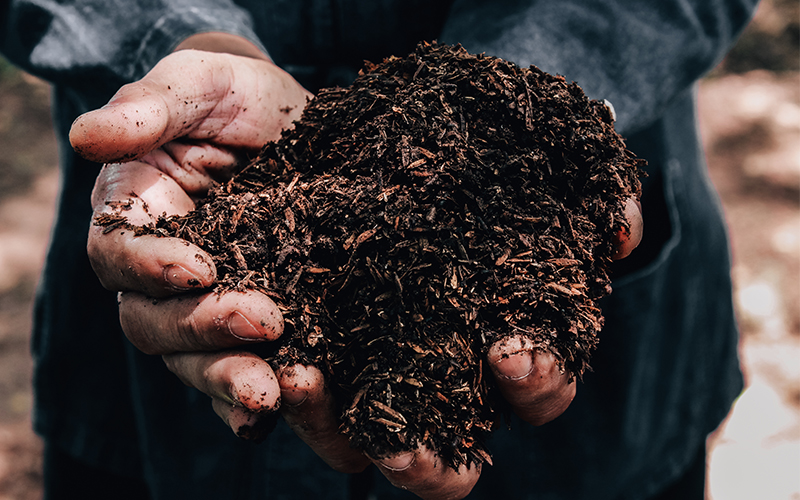
An effective way to improve soil quality is by maintaining your soil. When you create planting beds, incorporating organic matter is an excellent way to establish healthy soil. Each year, add more organic matter to continue building up soil that promotes a healthy ecosystem in your landscape.
Three tips to keep your soil healthy each year:
1. Consider raking your leaves in the fall and adding them to planting beds as a source of organic matter. Broadleaf trees, like maples and birch, are excellent sources of mulch. Just make sure you shred the leaves before putting them in the beds to help the leaves decompose quicker. You can create piles of leaves in an enclosed area to create leaf mold; a compost made entirely of leaves. If you have pine trees, consider using the needles as mulch.
2. Avoid walking in your beds when the soil is wet, as this compacts the soil. Patience is required when you're eager to work in the garden during early spring, but staying off the damp ground will help maintain soil quality.
3. Put the right plants in the right place. Some plants like dry soil, while other plants prefer wet feet. Carefully observe factors like sunlight and wind exposure before planting to ensure you’re choosing plants that thrive in your yard. Working with nature will help you create healthy soil and a healthy ecosystem.
Looking for plants for a specific garden soil challenge? You'll find great options for clay, sand, and rocky soils below.
Best Plants for Challenging Soils
Favorite Plants for Clay Soil
Goldsturm
Black-Eyed Susan
A colorful, fuss-free border plant and an excellent choice for cut flowers. Bright, daisy-like, golden-yellow flowers with black centers cover the dark green foliage. Tolerates heat, humidity, and clay soil. Full sun. Up to 26" tall, 24" wide. Zones 3-9.
Northwind
Switch Grass
A compact, clumping grass with excellent vertical form. Olive to blue-green foliage turns golden yellow in autumn. Sturdy stems stay upright, even under snow load, giving protection to wintering songbirds. Good for erosion control. Partial to full sun. Up to 6' tall, 3' wide. Zones 4-9.
Lil' Flirt
Spirea
An exceptionally tough and compact variety with rich burgundy new foliage that offsets deep pink flowers that appear in spring, and again in summer. Tolerates full sun without burning, and adapts to urban settings with poor soils - even compacted clay. Partial to full sun. Up to 3' tall and wide. Zones 4-9.
Favorite Plants for Sandy Soils
Tuscan Blue
Rosemary
Quickly forms an upright hedge of aromatic, needle-like evergreen foliage. Profuse clear-blue flowers add a charming effect. Leaves can be used as a flavorful herb in cooking. A great choice for screening or in carefree, waterwise gardens. Full sun. Up to 6' tall, 4' wide. Zones 8-11.
Thumbelina Leigh
English Lavender
An extremely aromatic and profuse bloomer, this compact selection produces lovely spikes of violet-blue blooms up to three times per year! Prune back by one-half after flowering for the best repeat show. This versatile, undemanding little evergreen shrub thrives in lean, loose, fast-draining, slightly alkaline soil. Full sun. Up to 18" tall, 12" wide. Zones 5-9.
Frosty®
Potentilla
A versatile, hardy, and durable small shrub that produces an abundance of frosty white, buttercup-like flowers throughout summer on a mounding habit with finely textured green foliage. Widely adaptable to poor, rocky, or sandy soils, and clay. Full sun. Up to 2' tall, 3' wide. Zones 3-7.
Favorite Plants for Lean, Rocky Soil
Jewel of Desert
Ruby Ice Plant
Bright, multi-colored flowers are fringed with ruby-red tips. Forms a dense, weed-smothering mat, perfect as a groundcover or accent for rock gardens and containers. Hardy and adaptable, yet non-invasive. Full sun. Up to 6" tall, 20" wide. Zones 5-10.
Sunstar™ Gold
Coreopsis
Rich color for a sunny summer garden with this stunning new Monrovia exclusive from the Sunstar™ series. The large, red-eyed, molten gold-colored blooms smother the mildew-resistant foliage of this easy-care, well-behaved plant, providing a long season of vibrant color. Full sun. Up to 24" tall, 30" wide. Zones 4-9.
Lacey Blue
Russian Sage
This hardy, heat and drought-tolerant selection has an improved, sturdy, compact form that does not flop over in the landscape! Lavender-blue flower sprays enhance its aromatic, deer-resistant foliage. A colorful, easy-care choice that's easily grown in average to lean, fast-draining soils. Full sun. Up to 18" tall, 26" wide. Zones 4-10.
Get More Plant Care Tips and Guides
- Sign up for the Grow Beautifully Newsletter. You'll get gardening tips, design advice, free digital guides, and live webinar invites. Plus, new, exclusive plant information delivered straight to your inbox twice a month.
- Camellia Care Guide
- Hibiscus Care Guide
- Conifer Care Guide
- Boxwood Winter Care
- Azalea Care Guide
- Hydrangea Care Guide
- Top 10 Tips for Planting in Summer
- How to put Hydrangeas to Bed for Winter
- Our Top 10 Gardening Tips
- Guide to Pruning Flowering Shrubs
- How and When to Prune Hydrangeas
- Pruning Ornamental Grasses
- How and When to Prune Lavender
- Check out the "Garden Tips" section of the blog for care guides and garden tips on a wide array of plants.






